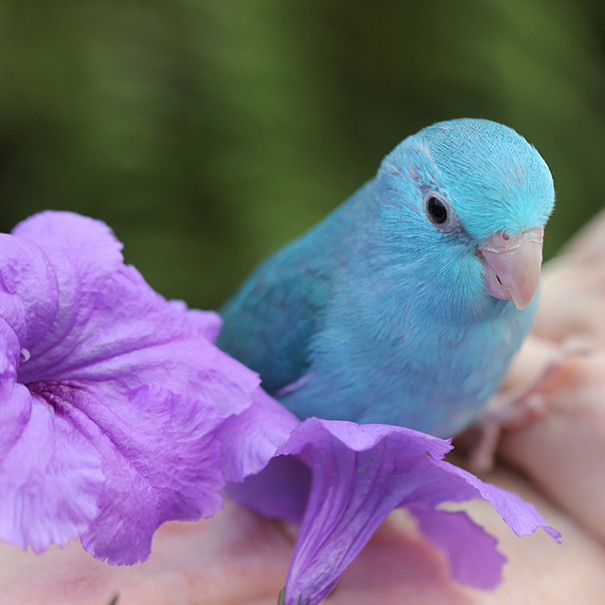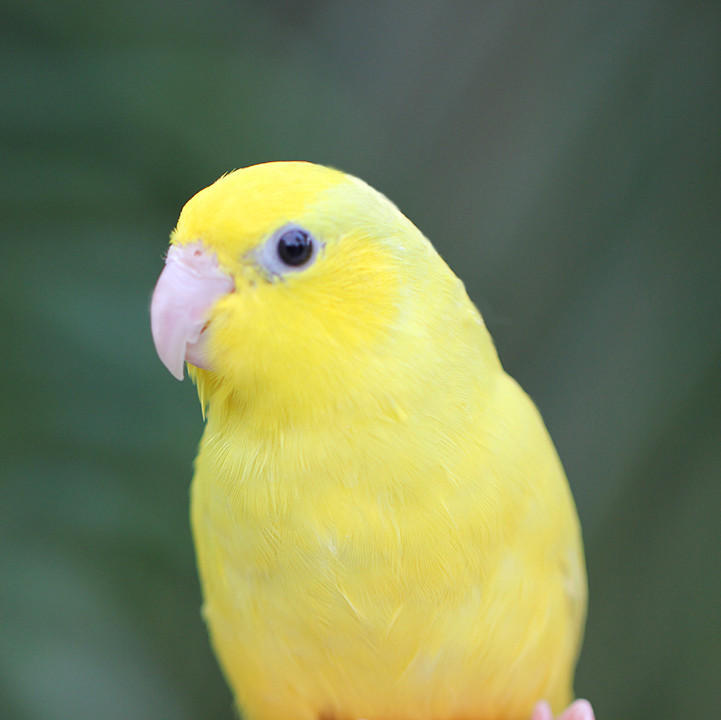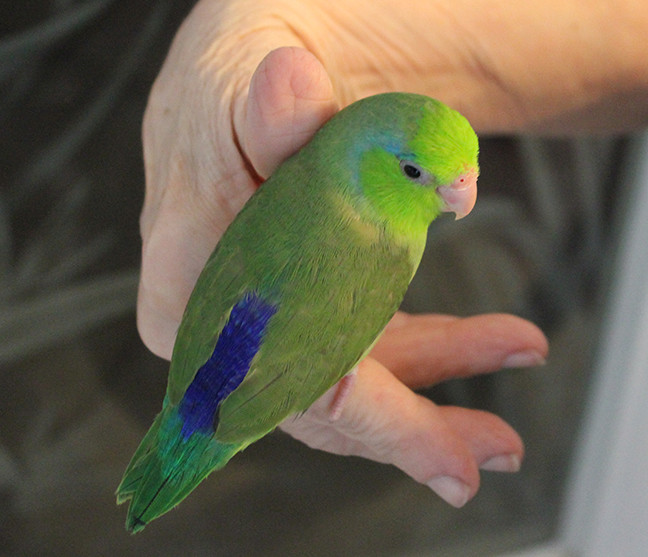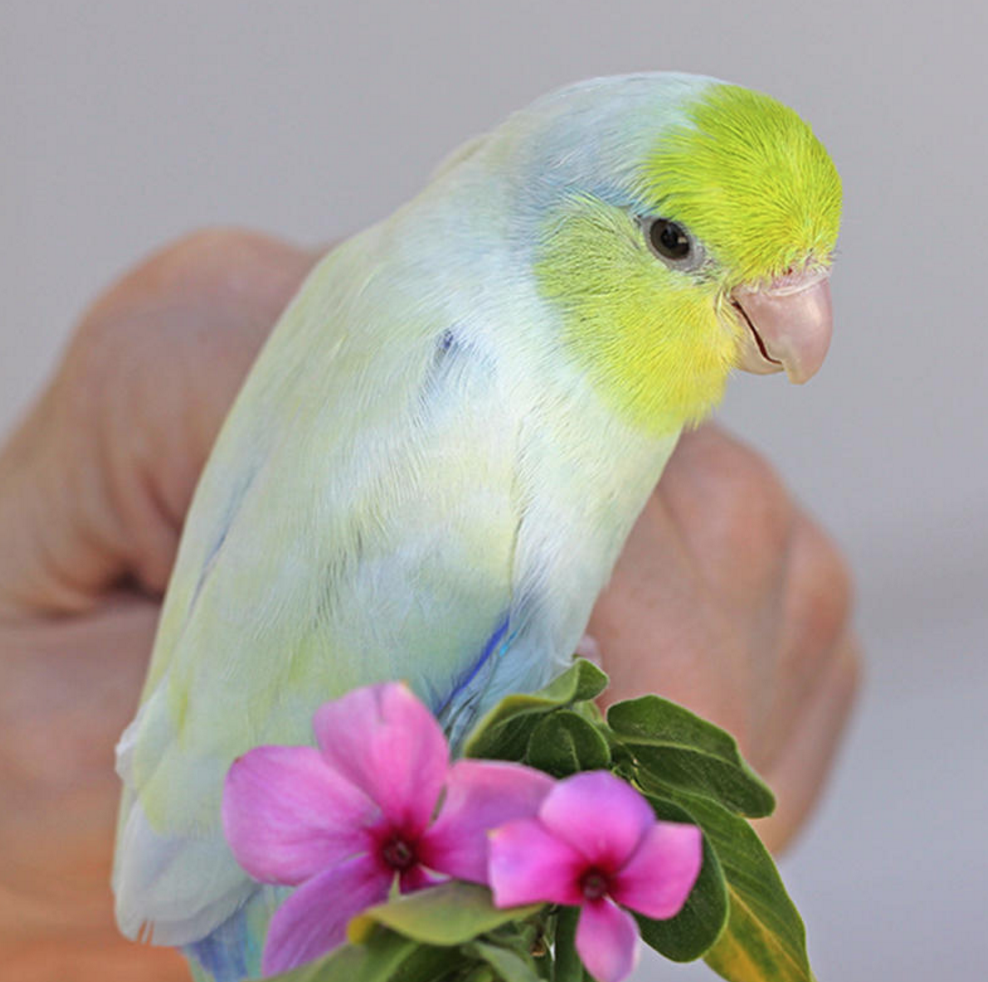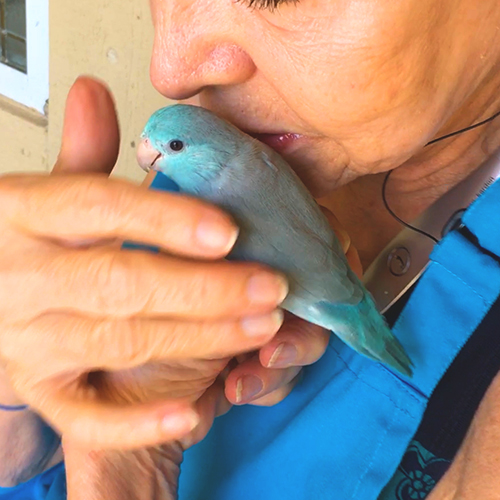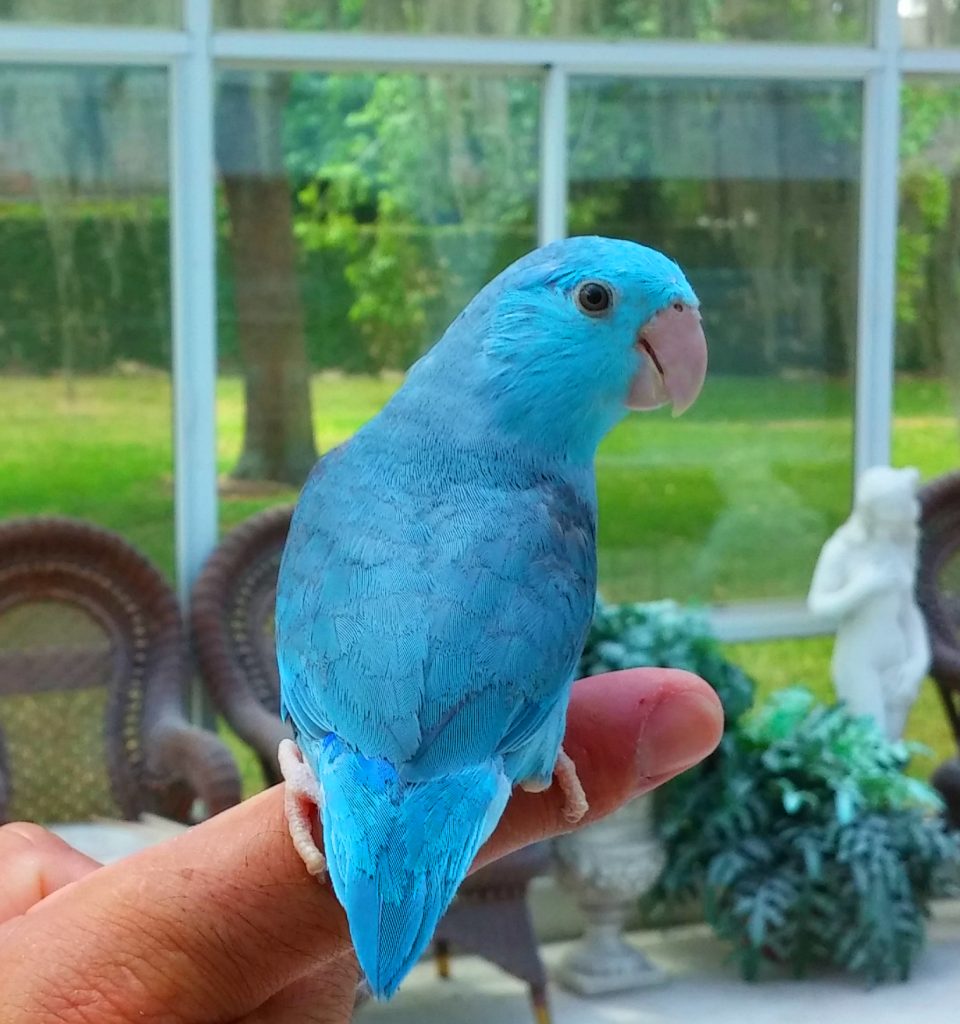
What is a Parrotlet?
The smallest parrot, but the biggest personality. These tiny yet magnificent birds make great companions and good entertainment. They are not budgies, and are thought to be descendants of the Amazon Parrot. The original color, green, looks very much like its supposed, much larger, predecessor. Parrotlets have a pleasant chirp, are considered one of the easiest birds to care for and feed, and most have the ability to learn speech. They are also called Pocket Parrots.
They are tiny parrots that are known for their brilliancolors, miniature size and interesting personality. Don’t be fooled by their size, these quiet little birds are just as smart and intelligent as their bigger cousins, the parrots. With a delightfully rambunctious nature and unmatched intelligence, parrotlets are an absolute pleasure to have around the house.
If you are looking for Parrotlets for sale in Florida or Parrotlets for sale in California, then you have come to the right place. When people search for where to buy parrotlets, Fly Babies Aviary is the home of premier Parrotlet breeders where you can buy parrotlet babies or a grown parrotlet bird.
Parrotlet Information
Parrotlet birds are pretty, pint-sized parrots sized between 4.5-5 inches long. They are characterized by a stocky body and a short yet broad tail. Similar in personality to the lovebirds though more animated, they are known to be cuddly, intelligent, and with a deep need of daily interaction with others of their kin, as well as their human mates alike. Due to their incredibly small size and ability to fit in a standard shirt’s pocket, they are affectionately referred to as “pocket parrots.” These miniature birds belong to the genus “Forpus” and can be classified into seven different species of parrolet.
We have several types of Parrotlets for sale based in Florida. We have several pictures of parrotlets and parrotlet videos that we share.

Blue Parrotlets
Native to South America, the blue parrotlet is commonly characterized by sharp sexual dimorphism between males and females, wherein the males flaunt bright parrotlet blue stripes on the upper and under wing but no streaks around the eyes. The female parrotlet is just the opposite. Take a look at our blue parrotlets for sale.
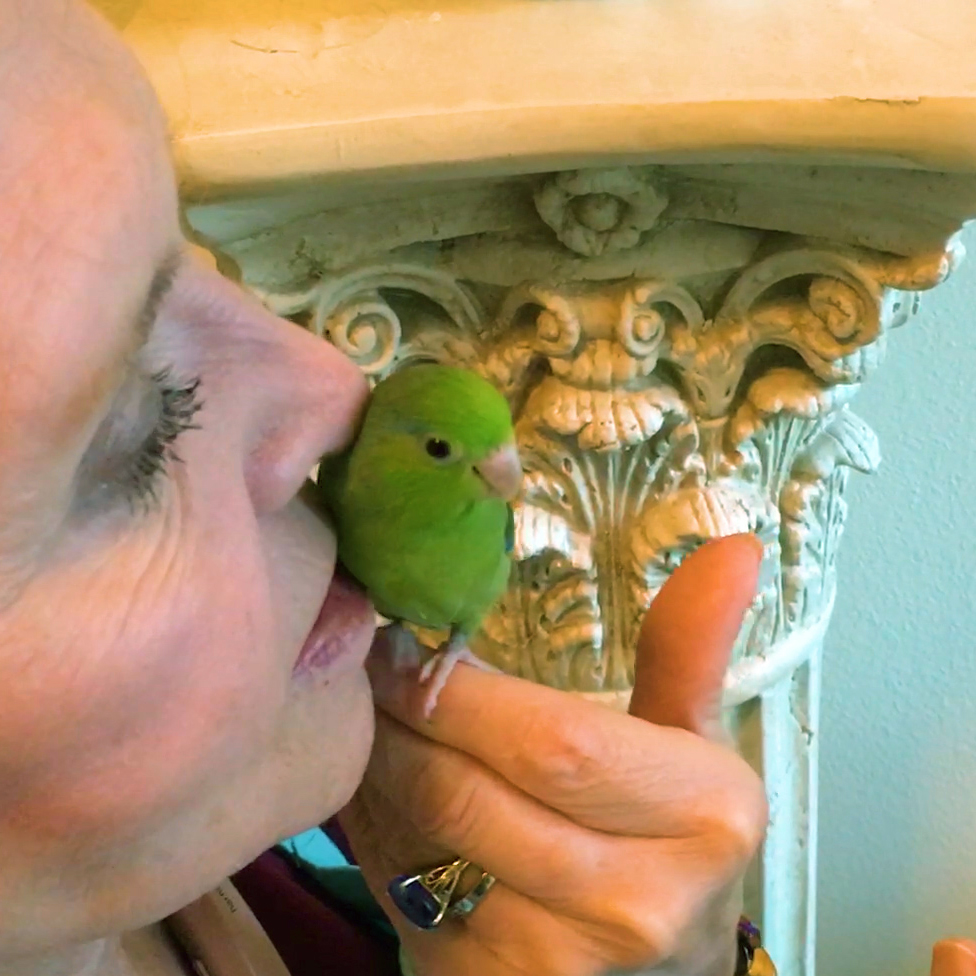
Green Parrotlet
Native to northeastern parts of South America, this is one of the smallest paralet species. Though they are not exotically colored per se, they are a delight to have around at home, as they do carry the typical intelligence and trainable nature of parrots. The male parrotlet has a bright emerald green body, and their wings have shades of brilliant cobalt blue and ultramarine. On the other hand, the single green female has a complete green body with a tinge of yellowish green on the forehead. Their beak and feet are pink in color. Although parrolets are usually known to have an active, chirpy and clownish behavior, the green rump species is a tad more reserved than others, and thus may need additional socialization.
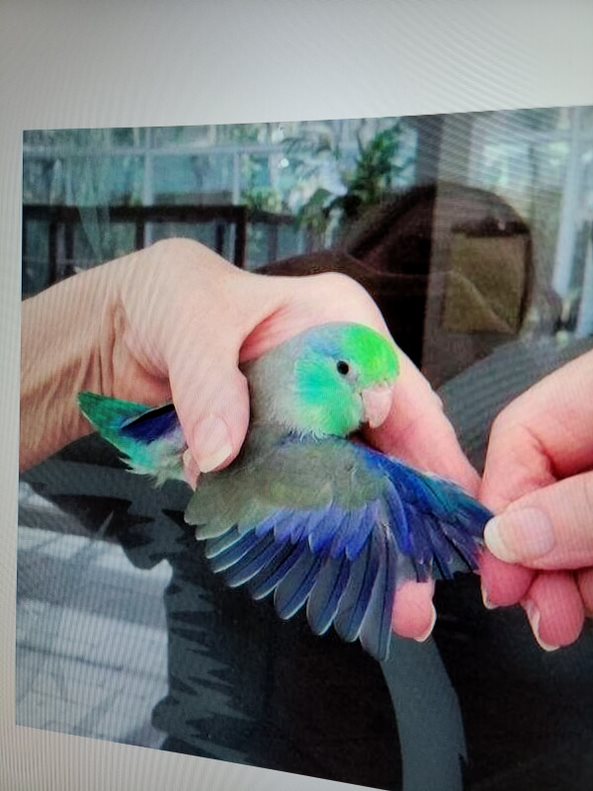
Turquoise Parrotlet
If you searching for a turquoise parrot for sale, you might consider the turquoise parrotlet, this is among the largest species of parrotlet known. Endemic to western parts of Mexico, these birds are sadly becoming more and more endangered in the wild. As parrotlet breeders, our baby parrotlets for sale are calm, adaptable and laid-back attitude makes them well suited to breeding conditions in a big aviary. Males are characterized by a dark green body with streaks of turquoise blue on the wings. The rump usually changes to a bright turquoise shade of blue soon after juvenile molting. On the other hand, the female Lutino sports a total green body with brilliant yellow-green markings instead of blue. Their beak is known to turn darker during breeding. Turquoise parrotelets for sale are one of the most popular.
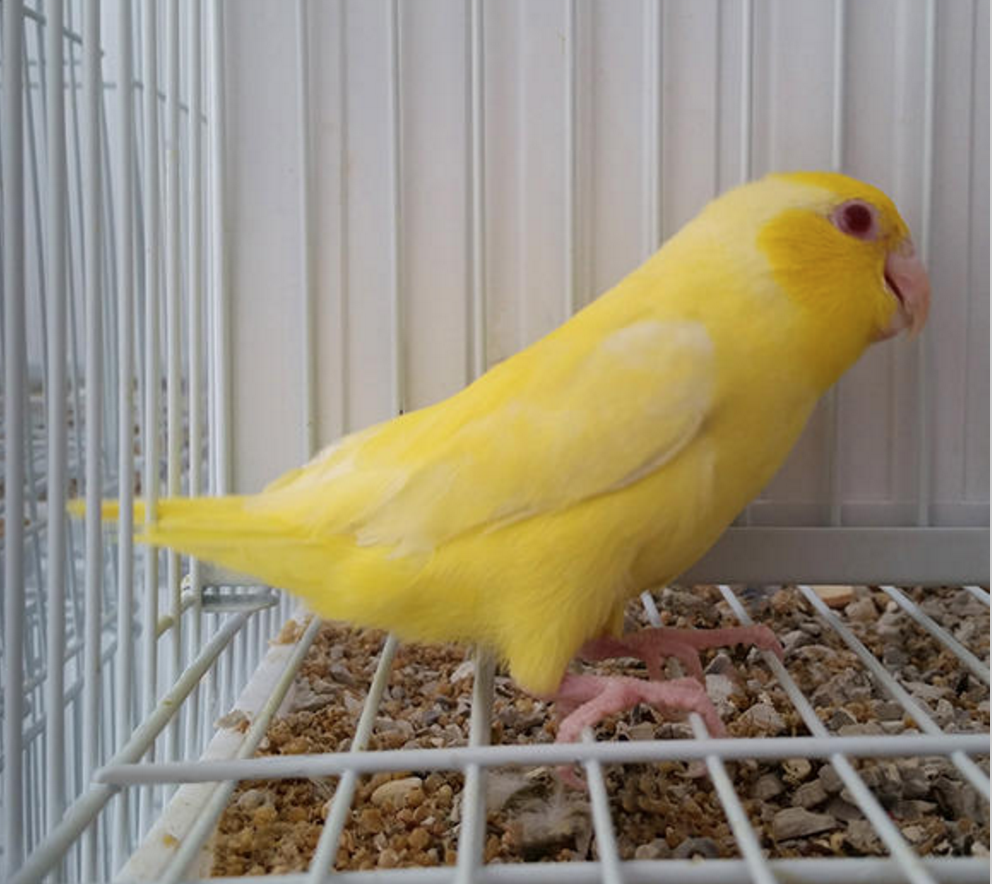
Lutino Parrotlet
A lutino parrotlet is a specific color mutation of the Pacific parrotlet (Forpus coelestis), which is a small species of parrot native to South America. Parrotlets are known for their playful and curious nature, and they are popular pets due to their small size and vibrant personalities.
The lutino mutation affects the plumage color of the parrotlet, causing it to have a predominantly yellow or golden coloration. Lutino parrotlets have bright yellow feathers, and their eyes are usually red or pinkish-red. The lutino mutation is recessive, meaning both parents need to carry the gene for the offspring to express the lutino coloration.

Blue Fallow Parrotlet
Of all the breeds, the fallow parrotlet for sale are the most popular pocket parrots available. Native to North America, this species is known to develop beautiful and eye-catchy color mutations upon being bred. The blue male parrotlet is characterized by a dull green body with a bold, apple-green color mask and a sky blue streak at the eye. The rump, wing coverts, and lower back are all tinged with cobalt blue. Females are the duller version of their male counterparts, as they lack the blue stripes on their wings. With their short, stout body and blunt tails, these birds have the personality of a larger bird in a pint-sized package. That is exactly why they are compared with Amazon parrots, their close cousins. As a matter of fact, there is a bit of physical similarity between the two.
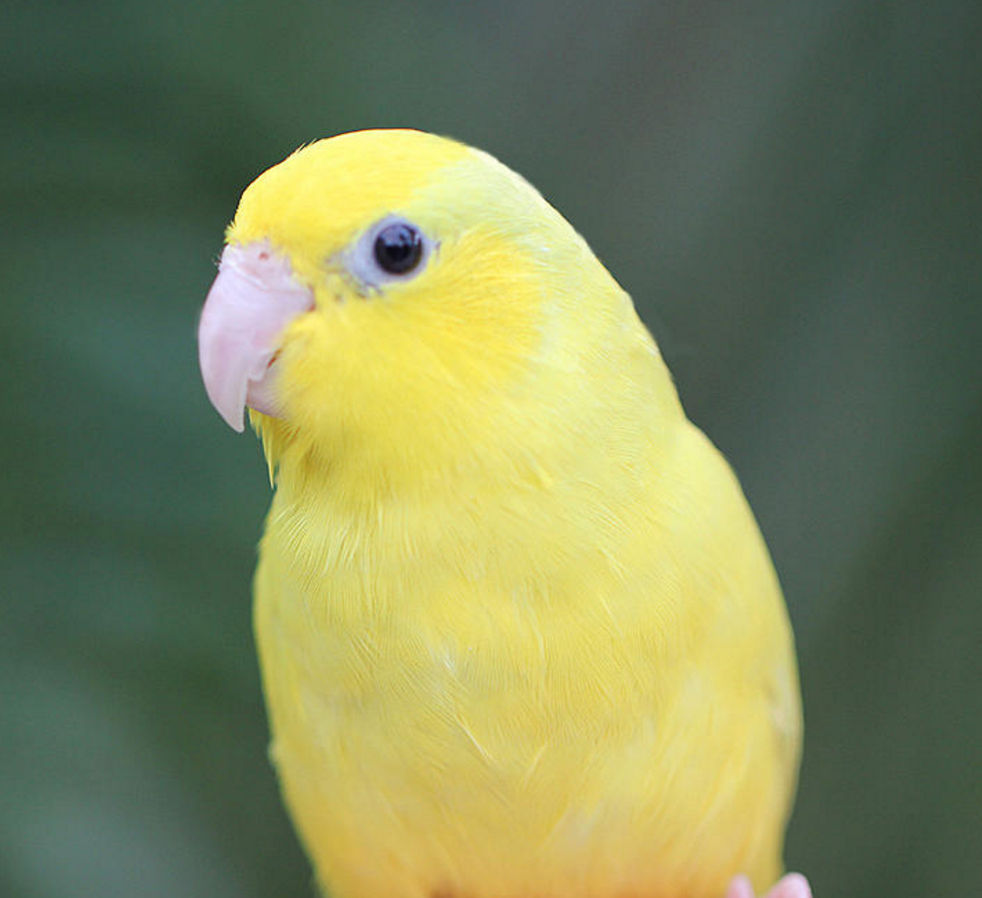
Yellow Parrotlet
The largest of all pocket parrots for sale is the yellow-faced species is also among the most endangered of them. This bird sports a brilliant lemon yellow mark on its crown and yellowish-green undersides. The males have grayish green upper parts with a bright cobalt blue stripe on the rump, wing coverts, and lower back. On the other hand, the females are characterized by a lighter shade of blue on the rump, lower back and wings. Endemic to northern Peru, these birds are known to have a long lifespan, almost up to 20 years. Parrotlet singing, whistles and catchphrases are what they are most known for. It doesn’t take much effort for them to learn words. Unlike other parrotlet parrots, they don’t have the usual parrotelet temperament, they aren’t hungry for petting, they do enjoy an occasional loving touch. With that being said, they still are quite social and adore attention from their human mates. In general, they are sweet, pretty, loving birds.

Spectacled Parrotlets and Pied Parrotlet
The miniature Spectacled Parrotlet or blue pied parrotlet is the latest addition to US aviculture. Despite the fact that only a few bloodlines have been imported from Europe, these birds have proven to be immensely prolific. The males are deep green parrotlets with brilliant violet-blue stripes on the wings and rump. Females have a lighter shade of green and are devoid of blue markings. However, their eyes are surrounded with a distinctive, bright ring. These birds are feisty, intelligent, and with a lot of parrotlet personality. Being quiet and easy to handle, they are well liked by newbie pet bird owners. Moreover, they can learn plenty of words, and whistle like a pro. They even pick up behavior cues like “kiss kiss’ and “leg up/down.” In fact, some can also learn to play dead at your command! However, they are extremely active and tend to get bored quickly.

Sclater’s parrotlets
Some Parrotlets are a dusky-billed Forpus that is a tiny species of parrots found in Brazil. The males are characterized by a deep green body and lovely violet tinges on the rump and lower back. The white single female has a relatively lighter plumage than the male counterparts. These playful little birds are charming and affectionate. However, they are pretty rare. Their favorite pastime is to indulge in long hours of cuddling and playing with their owners. Nothing amuses them more than activity! Interestingly, these birds have a unique knack of flying even with their wings clipped.
The most popular Fallow Parrotlet species in the United States are the Pacific, Spectacled and the green-rump ones. These usually weigh around 18-29 grams, and are roughly 3-5 inches in length. Their owners describe them as territorial, active and lovable. They are relatively easy to maintain as well.
Origin of Parrotlet
The Parrotlet has originated from western Equador and Brazil to north-western parts of Peru. Their natural habitats are tropical or subtropical dry forest, tropical or subtropical moist lowland forest, tropical or subtropical dry shrub land, as well as heavily degraded forest areas. You can see the variety in our pictures of parrotlets.
Parrotlets Information
Parrotlets are charming, mini-parrots with an adorable, affectionate and feisty nature. They are ideal pets for anyone looking for a great, low-maintenance companion. Being dimorphic and quick to pair up, they enjoy the company of their kin members. That is exactly why a pair of parrotlets performs better than a single male one kept in a cage. This is especially true for owners that are unable to devote all their time to their bird. They can even be kept peacefully in groups in aviaries, though it’s safest to keep them secluded from other species. Being intelligent, trainable and witty, they desire constant stimulation, in the form of interesting, parrot-friendly toys, high-intensity word training, loving talks and even cuddles. If you are concerned about parrotlet biting, they can be territorial when things don’t go according to their wish. However, a combination of love, care and proper training may help them become well-rounded birds.
Both males and single female white make equally nice companions. Contrary to popular belief, companionability has more relation with care and socialization rather than gender. The Pacific parrotlet, in particular, is a fierce bird for its size, with a sort of Napoleon complex that is quite irksome to incompatible species like large dogs and curious cats. Hand fed parrotlets for sale are particularly very friendly, as they adore contact with their owners at the slightest chance they get. However, they are not the ideal pet to have around children, especially if the kids are unruly and boisterous. The parrotlet can be pretty temperamental, and is known to deliver a sharp nipping when incited.
Parrotlets Singing and Speech
The parrotlet is not a noisy bird exactly, though you can implement training parrotlets to repeat small words and simple catchphrases with ease. They can also be trained to mimic, though they are certainly not the best talkers of the aviary kingdom. However, they respond well to positive reinforcements given during parrotlet training and, as such as less stubborn to teach.
Parrotlets Care
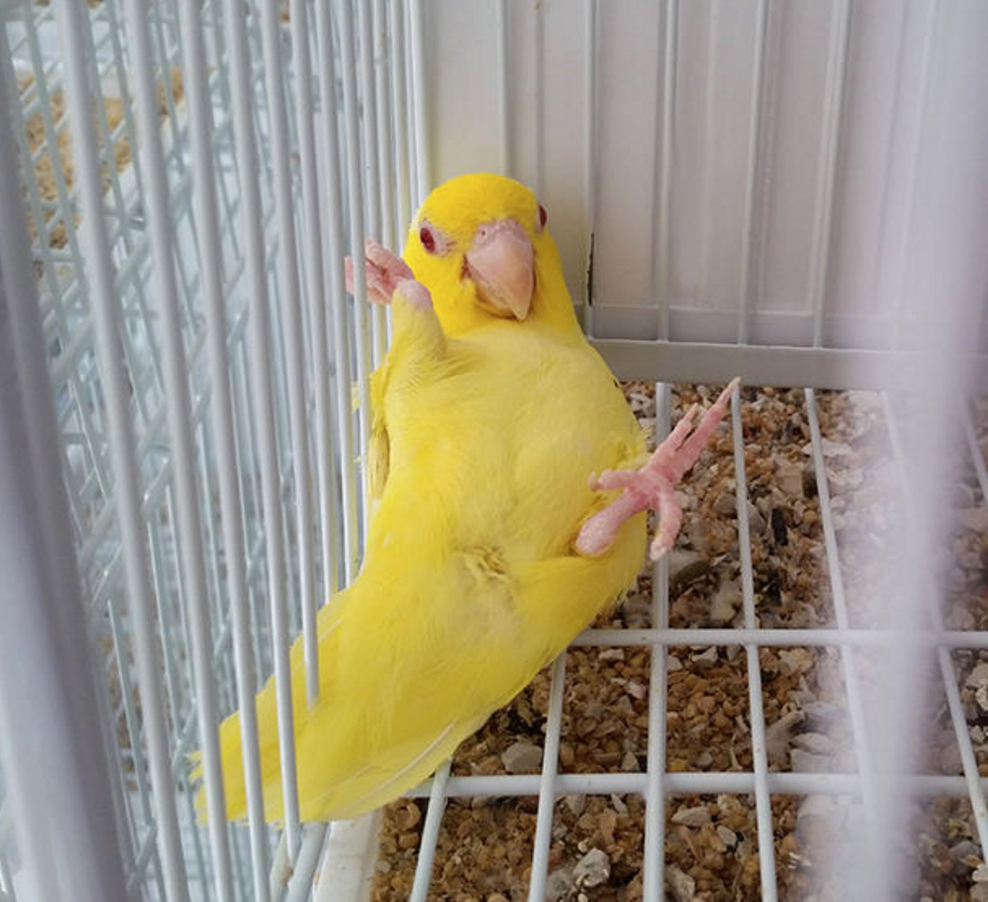
Cage Requirements
The bird may be small but that doesn’t necessarily mean that it needs a small cage. In fact, the larger the cage, the healthier and happier the bird will be. These birds should have a cage that is large enough to enable them to outstretch their wings fully, without getting the feathers trapped on the sides, or their tail feathers caught against the bottom grill. Ideally, a wide cage with a 1/4-inch bar spacing would do. Most owners and animal experts swear by a cage having dimensions of 24 by 17 by 17 inches. However, just having a spacious cage is not enough for them. Remember, these are highly active birds that require enough mental stimulation to stay busy and healthy. Thus, keeping a few parrot kabobs and toys is an absolute must. These birds also adore tiny swings and boings, as keeps them upbeat and playful even when left with no prospects for freedom in a gloomy cage. It is also advisable to use safe toys that lack movable or detachable parts, like string, screw or wires. The Parrotlett loves entertaining themselves with toys as much as snuggling up to their human mates. Hence, full-time attention is equally important.
Dietary Requirements
The Parrotlet parrot benefits from a pellet-based diet adequately supplemented with seeds, fresh fruits and vegetables. They also require a good source of calcium, such as cuttlebone (cuttlefish shells). It is important to dice the fruits before serving them so they find it easy to swallow it. Fresh, diced fruits and vegetables are important for proactive development and prevention from seasonal infections. Forpus-friendly fruits and vegetables include corn, oranges, pears, peas, apples, celery, green beans, bananas and pomegranates. A small serving of nuts and seeds is recommended, though you must restrict it to only a single portion per day. According to certified avian breeders, the best diet for the Forpus is a varied one, including a generous dose of leafy, green veggies and citrus fruits. Inclusion of black-oiled sunflower seeds is important too, if you want them to develop a healthy green sheen. Interestingly, these birds are known to favor fresh, small-sized food bits more than vegetables that are half their size!
Parrotlet Aviary
It’s advisable to place their cage in a frequently visited part of your home. However, you may want to ensure one side of the cage is rested against the wall, so that the bird can retreat away from people and chaos as and when they want. It is also important to ensure that the room is less than 80 degrees as well as not exposing the cage to direct sunlight. Do not place the cage in the kitchen since cooking fumes and exhaust smoke can choke the bird.
Maintain the Cage Regularly. Just stocking the bird in a spacious cage doesn’t guarantee his safety and healthy. You also need to take a little extra effort to care for the place daily. For starters, you should replace the liners every day, and wash the food and water dishes thoroughly. Additionally, you can mop the cage every once in a week, or whenever it gets dirty and littered. Ensure to clean the cage bars, perches, toys and other accessories at least once every month. Depending upon the habits of your bird, as well as the number of parrot let you own, you may need to clean their cage more often that you thought. Another thing to keep in mind is that while cleaning, you should remove the bird first; else the fumes emitted from cleaning supplies may harm them.
Feeding Parrotlet Care Information
Avoid Feeding Certain Foods
Do not give your Parrotlets foods that aren’t good for their system. Specific foods like avocado, sugar, chocolate and fried stuff do more harm than good. Chocolate and coffee are proven to be highly detrimental to a bird’s health as they contain caffeine and many other toxic ingredients. Other foods to avoid are Aloe Vera, raw peanuts, cooking oils, alcohol, herbs & spices.
Feed your Parrotlet Roughly 12% of Their Body Weight for Every Meal
Parrotlets mostly weighs around 33-34g, so you may want to feed it around 4-5g of food for each meal. Then again, these birds are known to self-regulate, so you can keep extra food than they normally eat, especially of pellet variety. Also, ensure to remove and clean up perishable food once every day.
Use a Bottle for Water
Parrotlets need a fresh supply of water daily to stay healthy and pretty. It’s recommended to refresh the water supply every once or twice per day. Experts advise against using distilled water as most birds like its taste. Additionally, a water bottle is more preferable over a dish, as these birds tend to become more susceptible to infections when they sip from a water dish, even when it’s regularly cleaned.
Watch for symptoms of Illness
There are no specific health concerns surrounding the Parrotlet, they are commonly considered a tad more susceptible to bacterial and yeast infections. Gastric ailments are prevalent in a few species as well. Sometimes the symptoms of these diseases can be missed easily, so it’s necessarily to note their health closely. There have been many cases of sudden death just because their owner failed to identify signs of their illness in time. Typical symptoms that belie an underlying health problem are:
-Flaky skin or beak
-Wheezing
-Teary eyes
-Swelling or redness around the eyes
-Lameness
-Sores on the feet
-Broken or dulled feathers
-Feather loss
-Abrupt change in eating habit
By keeping vet appointments regular, you can surely preclude serious health ailments from afflicting your little fallow Parrotlet friend. It’s advisable to opt for at least two checkups every year, as well as additional consultations anytime you notice significant changes in behavior.
Why Keep a Parrotlet as Pet?

All birds can be good pets but baby parrotlets and parrotlets can make GREAT pets. Their interesting and comical personalities and need for human interaction provides good companionship and constant entertainment.
All birds make for good pets but the parotlet makes a GREAT pet. Their heart-warming nature and comical personality make them fun to have around, while their constant need for human interaction makes them great as companions.
Here are a few reasons to keep them as pets:
These cute, birds are the smallest parrot in the world. They are fun and beautiful to behold, and do not shy away from breaking into funny antics and comical behavioral attitudes that are sure to put a smile to your face. Keep them well fed, give them a toy and a light head scratch, and put them on a hard surface, that’s all. You can spend hours getting amused by their unique display of movements.
With only 6 inches from head to tail, parrotlets are small and require little space in a medium-sized cage. Being lightweight, they are easy to hold and care for.
Unlike parrots, these birds are quiet and less stubborn. This makes them ideal for apartment dwellers. They are also well suited to homes where dogs and cats are not permitted to stay.
These birds are comfortable in a spacious cage and with an abundant supply of bird-friendly toys. They are great as an indoor pet as they do not need rigorous exercise or walking. However, they do enjoy walking or flying around the house when bored.
These birds are quite hardy and tend to stay healthy in general. Thus, they do not need regular vet visits. With proper care and maintenance, vet visits can be limited to twice a year.
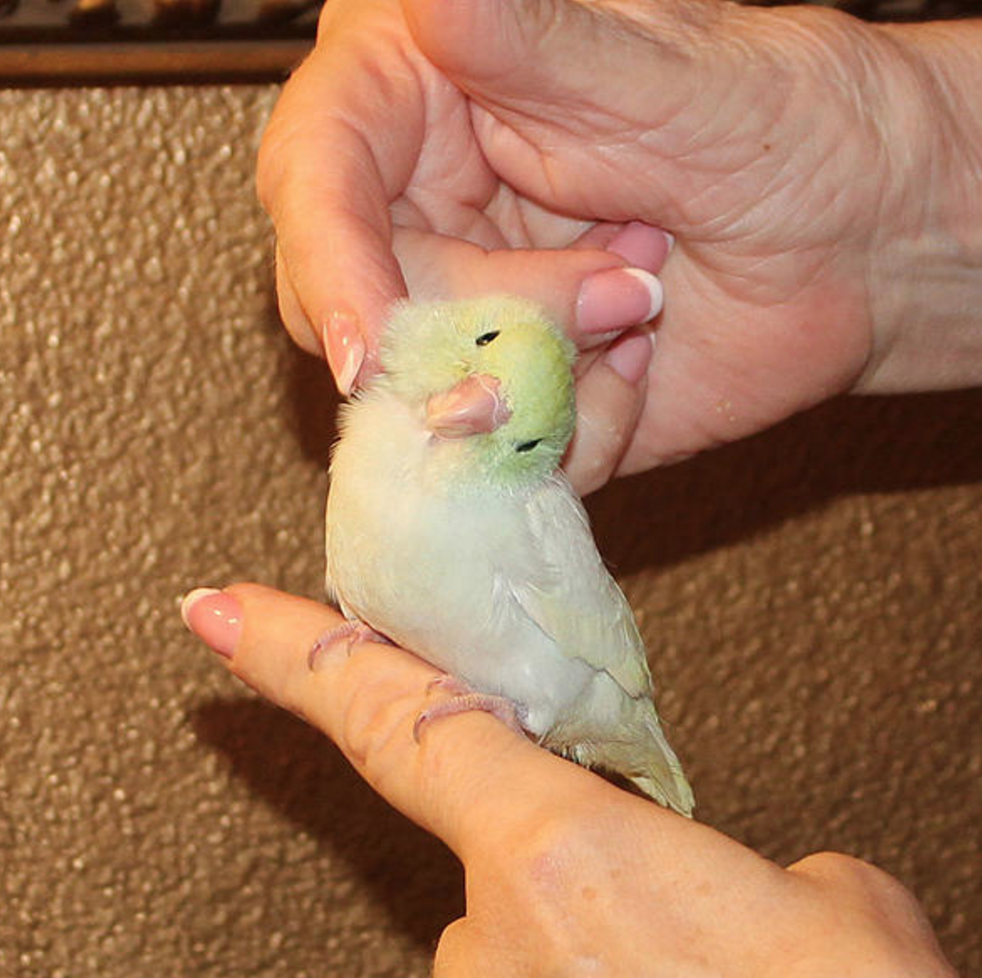
Parrotlets are among the friendliest birds. They enjoy riding on your shoulder or nestling inside your warm shirt pocket. They love the sound of human speech, and respond well to communication. Hand feeding parrotlets can be a great way to bond. They socialize very well.
You can factor in parrotlet price. Parrotlets are economical to feed. These birds are quite flexible in their dietary requirements. Since they eat very little, bird food, like millets and seeds can last for months. Parrotlets love nibbling on anything and everything!
Parrotlets are long-term pets. These birds have a long lifespan, ranging from a baby parrotlet to 20-40 years. Thus, you can easily enjoy a lifelong bond your pet parrotlet.
Tips to Prepare Yourself Before The Arrival of Your New Parrotlet
Set up the largest cage possible in a part of your home that is frequently visited and shielded from direct sunlight or sharp items. You can even purchase a travel carrier to ensure a safe, hassle-free trip for the parrotlet on its way to your home, as well as for future trips to the vet.
Have a discussion with your family members, particularly the tiny tots, about parrolet care and feeding the bird. Children enjoy active participation with a new pet, and are more than happy to help out with basic maintenance tasks like food preparation and cage cleaning. This is also a great opportunity for them to become a responsible pet owner.
Consider bringing the parrotlet home on a weekend, though not a holiday weekend, as there might be a huge flurry of activity and more guests in your home than usual. This could cause the bird a lot of anxiety, especially since the transition to a new environment is a bit of a stress for them.
Allow the bird to adapt to its new place and surroundings. Ask your children to avoid crooning all over the parrotlet and cuddle them without their approval. Like humans, birds too need adequate time alone to get used to the sights and sounds of its new environment.
You do not need to carry insurance into your pocket parrot price. Find an experienced avian veterinarian in your locality for future emergencies and health checkups. You will want to seek the counsel of a vet for a preliminary health examination of the bed. Unlike other pets, there is not a high parrotlet cost.
The small size of the smallest parrot doesn’t necessarily mean it is a small commitment. As an owner you may have to spend many days letting it adapt to your home, and get to know you before it can finally cheer up and start to play. With proper training and care you will be rewarded with an adorable, loving and interesting pet bird for company. The nurture and love that we put into caring for our birds are definitely worth the parrotlets price. We have a variety of birds for sale in Tampa. You can find a baby parrotlet for sale, blue parrotlet for sale, or a white parrotlet.
Check out our Parrotlet Sale in our Shop or look at our Parrotlet pictures!
